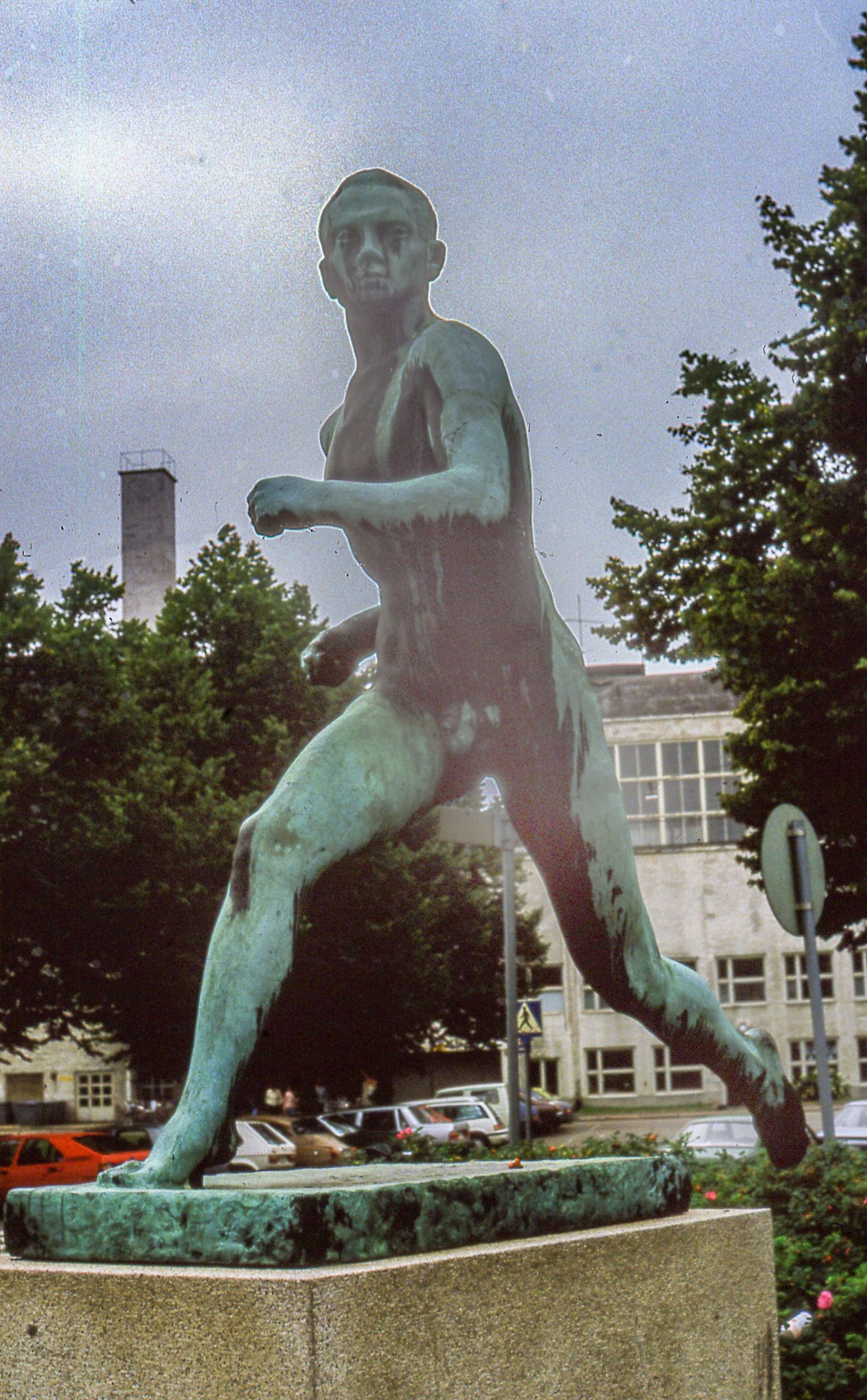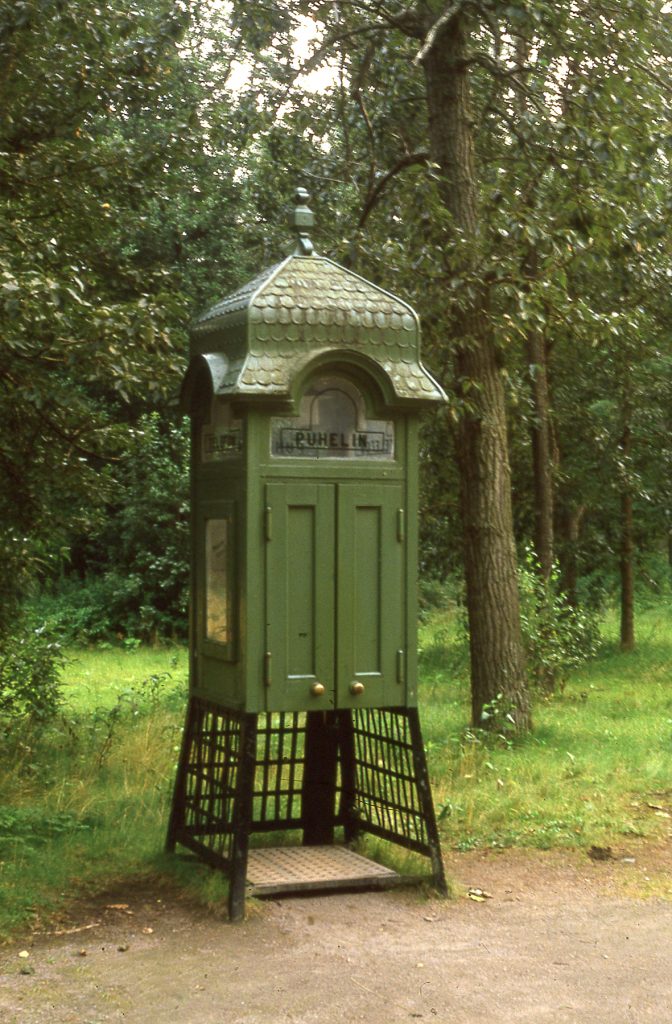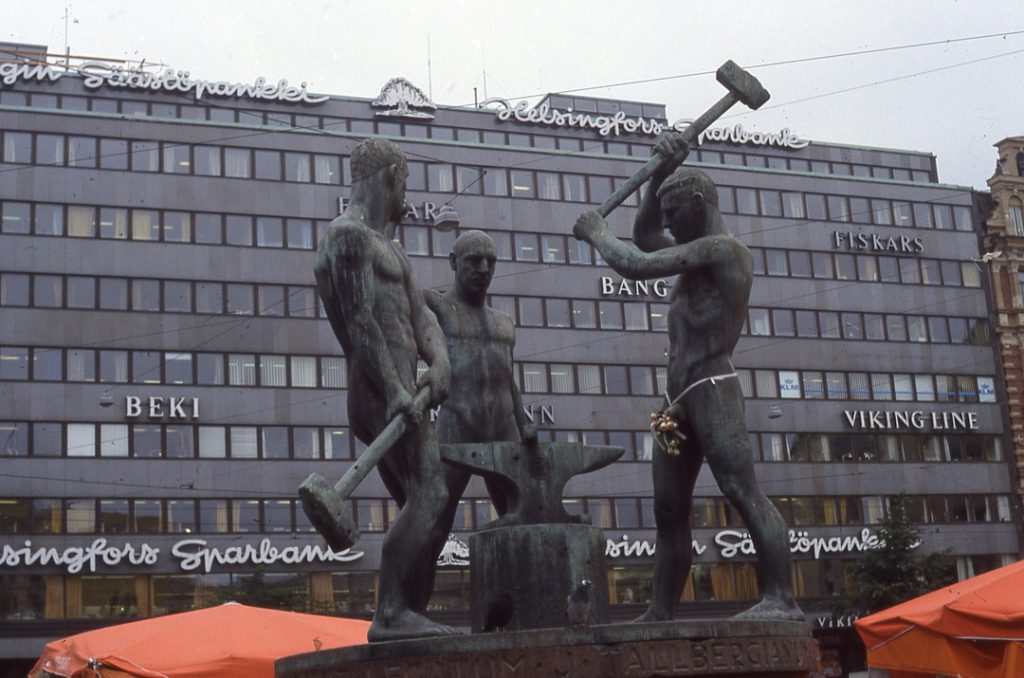Walking Around Helsinki

In 1962, at age twelve, I bought my first LP, Finlandia and other music by Jean Sibelius. Listening to The Swan of Tuonela inspired me to read the Kalevala. The Kalevala is the Finnish National Epic. I read it in 8th grade. I had long known the prayer from Finlandia. It appeared on page 73 in the 1935 Methodist Hymnal. The tune has been in every Methodist hymnal since with the title “Be Still, My Soul.” But the complete tone poem, Finlandia, is so much more than the prayer. Thanks to that LP, I loved my time in Finland, especially walking around Helsinki
One version of Finlandia is today’s Video of the Day, with excellent photography of the Finnish countryside accompanying the music. I recommend you listen to Sibelius while reading this post. And then listen to it again, after you’ve finished reading. You’ll want to catch the full minute of watching baby ducks drop out of the nest and fall down the hill into the river. That happens between minutes 5 and 6, if you want to skip ahead.
Arriving in Helsinki
On March 16th, I posted about traveling to Finland to see the production of the largest rya tapestry in the world. I spoke then about flying for 17 hours from Los Angeles to Helsinki on FinnAir. My host, Eeva Pinomaa, met me at the airport and drove me to my hotel. When planning the trip, I had explained to Eeva that I knew nothing about lodging in Finland, and asked for her recommendation. She told me that most Americans stayed at the Marski or the Palace. The Marski is at the downtown end of the Esplanade and the Palace overlooks the harbor. I replied that I had no desire to stay where “most Americans stayed.”
Eeva quickly came back with a new suggestion. The Rivoli Jardin, recently renovated, was a lovely little hotel centrally located. Just a block off the Esplanade, it was roughly halfway between the Harbor and the main downtown street, Mannerheimintie. A great location for someone walking around Helsinki. I was a bit taken aback when we pulled up and I saw a large brass plaque by the front door. Best Western! What? I came all this way to stay at a Best Western??? But the Rivoli Jardin was lovely, and to the best of my knowledge, I was the only American in residence. Certainly the breakfast buffet was unlike any that Best Western serves in the U.S.
Helsinki, A City for Walking
Of course, I was much younger in 1985, but I never took a taxi while in Finland. If Eeva didn’t pick me up to visit the Friends of Finnish Handicraft, or other business-related venues, I walked. That said, I doubt that I walked all the way to Seurasaari, the natural historic park on an island north and west of central Helsinki. I did spend several afternoons at the park. I have vague memories of riding a city bus back from the Park. When I return to Finland, I’ll be certain to visit Seurasaari again. And this time, I’ll visit the nude beach there. (I would have visited it in 1985 had I known it existed.)

Whaddya mean, you don’t know what “Puhelin” means? In many respects, Finland was the most exotic place I had ever visited. At age 15, I had been to Japan with my father, but Tokyo seemed like a larger version of Japantown in San Francisco. Even in the countryside, the lack of signs in English didn’t phase me. At age 21, I had spent the summer in Paris, with side trips to England, Scotland, Switzerland, Germany and the Netherlands. What was different now? Every other place I had visited, the signs were either completely incomprehensible (Japan) or easily guessed.
But Finnish, like Hungarian and Turkish, is not an Indo-European language. Except for a few loan words (poliisi, e.g.), there is no correspondence between a Finnish root and any English (French, German, Spanish, etc) word. What I found disconcerting was the combination of the Roman alphabet and non-Indo-European words. Puhelin, by the way, means Telephone. But you knew that didn’t you.
Churches in Finland

Not far from my hotel, Uspensky Cathedral is the seat of the Diocese of Helsinki. Finland is a complicated place. Located between the Swedes and the Russians, Finland has been a part of both its neighbors’ empires. Since 1917, Finland has been an independent country, but its roots show. Officially, the country has two languages, Finnish and Swedish (although I found shop clerks who refused to speak Swedish to visiting Swedes). Also officially, the country has two state-supported churches, Lutheran and Orthodox. The Orthodox Church is smaller than the Lutheran, but their buildings are no less impressive.
Out on a Sunday walk, I came upon Uspensky Cathedral, and noticed that the front door was open. I entered and found myself in the midst of Sunday worship. Never having attended an Orthodox service, I was surprised by many things. First, there were no pews. A few simple chairs were placed here and there, but for the most part, the sanctuary was empty of furniture. As I watched, some church goers stood, some knelt, and some lay prone on the floor. There didn’t seem to be any rhyme nor reason to it, but at a certain signal that I missed, everyone, standing, kneeling, or prone, crossed themselves and changed position. Those standing knelt. Those kneeling, lay prone. Those prone, stood up. I was amazed.
What did he just say?
I couldn’t understand a word that was spoken. Whether the priest used Finnish or Old Church Slavonic, I couldn’t say. Whichever, I don’t speak either language. There was a small choir, no more than a dozen singers, who somehow managed to fill the entire space with music. The choir never stopped singing. Never. For over two hours! Impressive! And from time to time, a priest would go to the front wall and open a door exposing one icon or another. We don’t do that in the Methodist church. Nor was I prepared for the length of the service. Already in session when I stuck my head in, the service continued for another two hours. I stayed to the end, absolutely fascinated by the whole experience. After the service, I left the church to spend more time walking around Helsinki.
Back home in Missoula, I mentioned the morning to our local Greek Orthodox priest, a red-haired Scot. His comment? “We Orthodox like to do our own thing.” I guess so.
Gay Life in Helsinki
One of my walks took me to the headquarters of SETA, the Finnish National Gay Rights Organization. SETA had an admirable library, most of which was beyond my linguistic limits. They did have an impressive collection of foreign magazines, including Gay Scotland where I found an article written by an acquaintance from San Francisco. Carl Wittman was a Scottish County Dancer who left the Bay Area and helped found the Radical Faerie Center at Wolf Creek, Oregon. He was also instrumental in the beginnings of the gay periodical RFD. Sitting in an office in Helsinki, I read his article in Gay Scotland. I was amazed (but not surprised) at his thesis. The unspoken secret of the Royal Scottish Country Dance Society (an organization of which I am a Life Member) is that without “old maids and gay men,” there would be no RSCDS.
Back in 1985, even with the SETA office, there wasn’t much in the way of gay life in Helsinki. At least not that I could find. There was one bar, I believe it was called Gay Gambini, although I can find no mention of that name today. I found my way to the bar a couple of different evenings, even though I am not a bar fly. I even went home with a couple of different men. The first experience was not pleasurable, in any way, and so forgettable that I cannot remember the guy’s name. (Something unpronouceably Finnish.)
Robert, the Diplomat
Three nights before I was to leave Helsinki, I met a young man at Gambini. His name was Robert and he was a career diplomat in the Finnish Foreign Ministry. People in that line of work typically spend two years abroad, followed by two years of home rotation. Robert’s most recent post had been Lagos, Nigeria. His foreign post before that had been San Francisco. Our night together was very pleasant, indeed.
I’ll never forget, however, walking around Helsinki, heading toward Robert’s flat, he asked me how I found the Finnish people. I answered candidly. “If I’m feeling polite, I’d say they are the most reserved people I have ever met. When I’m not feeling so polite, I’d say they’re the coldest.” Robert turned to me and said, “That’s just because you’re American, and Americans are all superficially friendly.” OK, then. We still passed a very pleasant night together. In fact, it was so pleasant that Robert invited me to join him for a weekend at his family’s country cabin where we could enjoy the family sauna. Alas, my schedule had me leaving Helsinki that weekend.
Enough of Helsinki, for the time being
I took a few sidetrips I’ll talk about next week, but as long as I was in the capital city, I spent my time walking around Helsinki. I did more sightseeing and enjoyed the hospitality of my host Eeva.
You’ll note that all of my “of the day” pages have connections to Finland. The Recipe of the Day is Finnish Easter Bread. I’ve made this several times, using the recipe in the Sunset Bread Book. It’s really, really good. I should go make some now.
You’ll also note that several of the links open to a page written entirely in Finnish. No, I don’t expect you to be able to read that language, with the exception of you, Jace. But at least on my screen, there is a blue button in the upper right corner that asks if you want to translate the page into English. I won’t speak to the quality of the translation, but it should give you the jist of the article.
I feel as if I should post a warning: Nude Statues Ahead. Paavo Nurmi, at the head of the page, was a Finnish Olympian who competed in Olympic games starting in 1924, lit the Olympic Torch at the 1952 Helsinki games. His statue runs nude outside the Olympic Stadium. The Three Smiths, seen above, depicts three nude blacksmiths and stands in a central location in downtown Helsinki. Note that I did not provide the symbolic fig leaf shown in the photo. I have another photo of nude boxers which I have chosen not to post. Suffice it to say that the boxers are very well endowed.
Tomorrow’s post is all about love. Or romance. Or books about gay male romance that I’ve been reading. As Scarlett said, “Tomorrow is another day!” Till then.
![]()


Hello.
What a great post presenting Helsinki. Thank you. What comes to churches in Finland, Helsinki do not offer correct answer. In Finland the majority of churches are wooden churches and they are mainly on the countryside. We have some specialties when talking about churches. Our bell towers are separated from churches and to this there is a heavy reason. Inside of our churches we have Votive ships! Most unique are poor-man-statues! I have presented all these in my posts. I did not give here links to my posts, because some blogs put comments including links to Spam folder. This is not good thing because, then may bloggers never get additional information which local bloggers offer. Sigh! Our memorials are most beautiful in the world. They can be found everywhere in my country.
Stay safe and healthy!
Thank you (Kiitos!) for your kind comment. Next week I’ll write about my travels outside of Helsinki (Turku, Hämeenlinna, Oula and Rovaniemi). I did see churches in many different locations and in a variety of styles. I will visit your blog and, with your permission, refer to it as my Guest Site of the Day when I next post about my travels in Finland. Did you see my post about being in Helsinki when the world’s largest ryijy was being woven? There’s a link to it under my Daily Posts: The Montana Horses Tapestry.